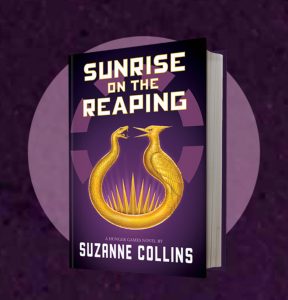Tattoos: from a taboo to a must-do
PHOTO Makenzie Cool
February 6, 2015
Tattoos. Until relatively recently they have been reserved for the biker gangs and rebels of society. They were taboo to pop culture and only those with the ink knew what the inside of a tattoo parlor looked like. Now as tattoos grow more popular and are seen in a different light, more and more people are getting them for various reasons. However, before heading to the tattoo parlor, one must decide a few things.
INSPIRATION
Choosing the actual design of a tattoo is a large part of the decision making process. There are some people who get tattoos simply because they like how they look, but many place meaning and significance behind their tattoos.
“A lot of my tattoos are the names of family members who have died,” junior Jermaine McGlown said. “That’s where my inspiration comes from, but I don’t plan to get anymore. I’m not counting on anyone else dying.”
Once a solid idea is established, it is often recommended to work with the tattoo artist in order to make sure the final design is visually appealing. An artist can offer advice about how a tattoo design will look based on their experience and can help make the transition from paper to skin.
“I wanted a tattoo because I think they’re pretty,” senior Emily Green said. “I think they’re unique and they can be more than just art. They can express how you feel about something. That’s where I get my tattoo inspiration, from my life.”
To give customers ideas for tattoos, parlors will often display pieces on the wall known as flash art. Flash art includes images that are pre-drawn specifically for the purpose of being turned into a tattoo. They are created by tattoo artists and sometimes traded between artists or parlors.
“I’m not into flash art,” English teacher Reginald Manville said, “although I do have a flash art piece. That’s fine if you find a piece that you like, but if it’s on the wall, how many other people are walking around with the same tattoo? My fleur de li is flash art, but it commemorates an event: Hurricane Katrina in ‘05.”
 PHOTO Makenzie Cool
PHOTO Makenzie Cool
PLACEMENT
Typically after a design is chosen, the next step is choosing an area on the body for the tattoo. Often, the design of the tattoo and the shape of the body influence this choice.
“The piece generally dictates where it is going to go on my body,” Manville said. “I wanted to do a piece on my shoulder, but when I brought the piece in for the artist to look at, he said it needed to go on my back. I have different parts of my body that are designated for different parts of my life. My left arm is more family oriented. I see my left arm evolving as life goes on.”
The fact that getting a tattoo can be painful has driven many people choose to have their tattoo work done in places on their body that are known to hurt less, places that typically have more fat or “meat” than others.
“He [my brother] told me it would hurt less if I got it on my shoulder,” senior Savannah Hourigan said. “So I just followed his advice. It doesn’t hurt as bad as people think it does. It only hurts when they hit the bone, so it’s not bad.”
Visibility is another big influence in the decision making process. The ability to hide a tattoo when needed drives people to position tattoos on specific areas of the body.
“My brother and I wanted to get a tattoo together,” senior Dillon Gardener said. “We both like lions so we got a lion. We were going to get our tattoos on our arms, but I play basketball and I can’t have it showing, so we just decided on ribs even though that is where it is the most painful.”
THINK BEFORE YOU INK
Anyone considering a tattoo is advised to think long and hard about the fact that tattoos are permanent. Permanent means permanent, and the required commitment to a tattoo is often what holds people back. Asking people questions about their ink is a good way to gain direct information.
“I didn’t look around for a tattoo shop that I liked before I got my tattoos,” Green said. “I kind of regret that, I really do. The one on my calf could have been a way better tattoo. Anyone considering getting a tattoo needs to know the artist, know the work they do, and have trust in the design before you put it on your body permanently. Think on it a long while before you get it.”
Doing extra research on a particular artist provides insight into his/her work and what he or she specializes in which might be something to consider depending on the type of tattoo one wishes to get. How a tattoo could affect employment is another factor that can influence the decision to get a tattoo.
“I regret my tattoos right now,” McGlown said. “People will tell me, ‘That’s stupid.’ ‘Why did you get it there?’ ‘You might not be able to get a job.’ They’ll even ask ‘Why did your mom let you get it?’ I’ve thought about getting a lot of them covered up with different designs, but I have them now so I’m stuck with them.”
A survey conducted in the United Kingdom found about one-third of people suffer from tattoo regret. Many people say the regret from a tattoo can be avoided by getting a tattoo that will still mean the same thing in 10 years.
“I don’t think a tattoo should be taken lightly; I wonder about the folks that just want it because it looks good,” Manville said. “Teenagers need to spend some time thinking. For those people who aren’t happy with what they got, I feel bad. That was a choice you made, you put that on you and now you have to live it.”








